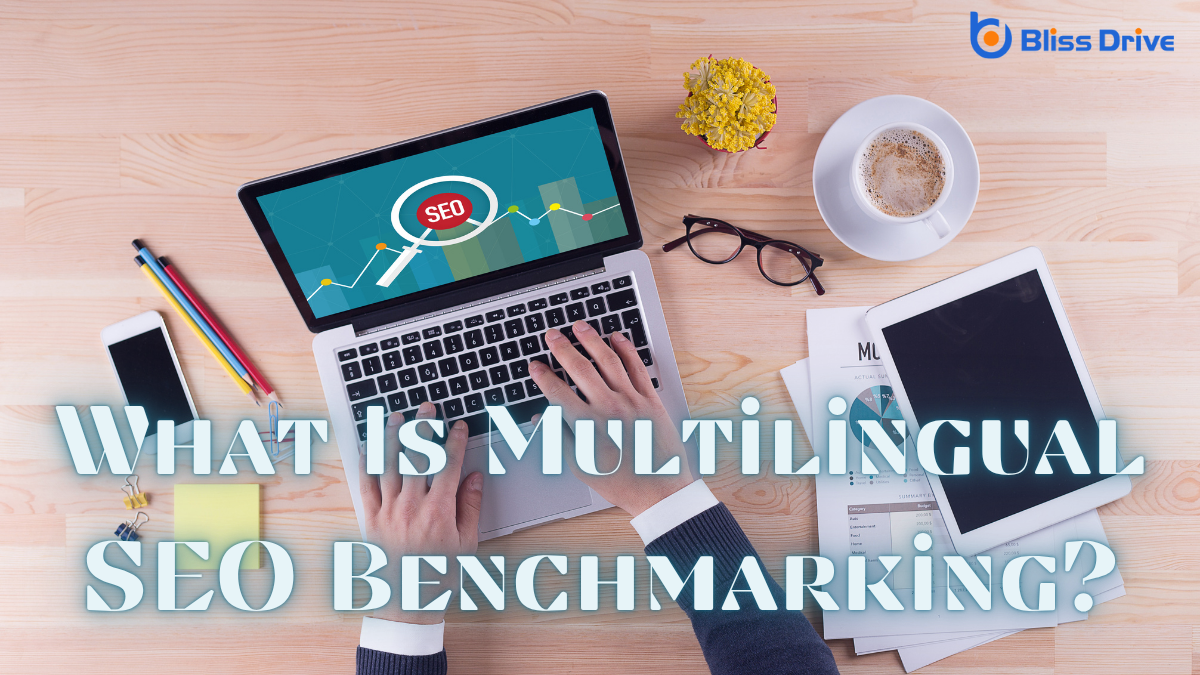Learn More About Us

You're likely wondering what multilingual SEO benchmarking entails and why it's essential for your business. Imagine this: your website reaching audiences worldwide, optimized for different languages, and tailored to local search habits. But how do you measure its success across diverse regions? By evaluating keyword rankingsThe position at which a website appears in the SERP., organic trafficVisitors who come to a website through unpaid search engine results., and user engagementThe level of interaction and involvement users have with social media content., you'll uncover insights into your strategy's effectiveness. Intrigued to enhance your global reach and connect with various cultures?
How do you start optimizing your website for multilingual SEO?
First, recognize the need to cater to various languages and cultures. It's essential to identify which languages your audience speaks.
Once you've pinpointed these, you should translate and localize your website content accordingly. This isn't just about translating words; it's about adapting to different cultural contexts.
Use hreflang tags to inform search engines about the language and regional targeting of your pages.
Make certain your URLs are structured to reflect language variations, helping search engines index them correctly.
Monitor and adjust your SEO efforts by analyzing metrics like organic traffic and user engagementThe interactions that users have with a brand’s content on social media. from different regions.

You're missing out if you're not using multilingual SEO to boost your international visibility.
By optimizing your content for multiple languages, you enhance the user experience for global audiences and help them find what they need more easily.
This strategy not only increases your reach but also builds trust with diverse markets.
In today’s interconnected world, businesses can’t afford to ignore the potential of reaching an international audience, and multilingual SEO is essential in boosting their visibility across global markets.
By optimizing your content for multiple languages, you guarantee that search engines can effectively index and rank your site in different regions. This approach increases your chances of appearing in local search results, making it more likely for international users to find you.
It’s not just about translation; it’s about tailoring content to meet cultural nuances and search habits. When you embrace multilingual SEO, you’re not just expanding your reach but also establishing trust with diverse audiences.
This strategy positions you as a global competitor, opening doors to new opportunities and markets.
While global expansion offers new horizons, ensuring a seamless user experience across different languages is essential. You’ll need to think beyond just translating content; cultural nuances and local preferences matter too.
Multilingual SEO isn’t just about reaching more people; it’s about making each user feel understood and valued in their native language.
Start by optimizing your site’s structure for different languages, ensuring easy navigation for international visitors. Use region-specific keywordsWords or phrases that users type into search engines to find information. and tailor content to match local search behaviors.
It's vital to provide consistent quality across all languages to maintain brand trustThe confidence consumers have in a brand's reliability and integrity.. By prioritizing user experience, you’re not just appealing to a broader audience—you’re building meaningful connections worldwide.
That’s the true power of multilingual SEO in enhancing global user experience.
To craft a successful multilingual SEO strategy, you must focus on several key components that guarantee your content resonates with diverse audiences and ranks well in search engines.
Start by confirming your website is properly optimized for each target language and culture. It's essential to use relevant keywords and phrases that align with local search habits.
Additionally, consider these vital elements:
Conducting a multilingual SEO auditA thorough analysis of a website’s SEO performance and areas for improvement. requires a systematic approach to confirm your website performs at its best across different languages and regions.
First, analyze your site’s technical SEO elements. Ascertain your URL structures are consistent for each language version, and check hreflang tags to prevent duplication issues.
Next, review on-page SEOOptimization techniques performed directly on the website, including content and HTML source code. by examining localized content. Make sure your keywords are translated accurately and contextually appropriate for each target market. Monitor your meta tagsHTML tags that provide information about a web page to search engines and visitors. and descriptions, confirming they’re optimized for different languages.
Finally, evaluate your backlink profile. Identify quality links from local sites that boost authority in specific regions.

To tackle multilingual SEO benchmarking effectively, you’ll need the right tools and techniques.
Start by exploring essential SEO benchmarking tools like SEMrush, Ahrefs, and Google AnalyticsThe systematic computational analysis of data or statistics to gain insights and support decision-ma... to track performance across different languages.
Pair these tools with effective strategies such as localized keyword research and content adaptation to guarantee your multilingual SEO efforts are on point.
When diving into multilingual SEO benchmarking, having the right tools at your disposal makes all the difference.
You'll want to track performance across various languages and regions efficiently. Here are some essential tools to take into account:
Although mastering multilingual SEO can seem intimidating, implementing effective techniques can significantly boost your site's visibility across various languages and regions.
Start by focusing on keyword research for each language. Use tools like Google Keyword Planner to discover local search trends. Don’t translate keywords directly; instead, find culturally relevant alternatives.
Implement hreflang tags to signal search engines about language-specific content, guaranteeing accurate regional targeting. Optimize meta tags and descriptions for each language version, maintaining consistent brand messagingThe communication and language used to convey a brand's values, benefits, and personality..
Confirm your website's structure supports different languages, using subdirectories or subdomains wisely. Regularly analyze your site's performance with analytics toolsSoftware used to track and analyze website performance, user behavior, and marketing efforts., adjusting strategies based on user behavior and search engine updates.
Understanding how search engines perform across different languages is essential for effective multilingual SEO strategies. You need to analyze various factors to guarantee your content reaches its intended audience.
It’s not just about translating keywords; it's about examining how different languages interact with search engines. Here’s how you can evaluate performance:
To effectively optimize content for multiple markets, you need a tailored approach that goes beyond simple translation.
Understand cultural nuances and local search behaviors to connect with diverse audiences. Research keywords specific to each market, as popular terms can vary greatly by region. Leverage native speakers for content creation to guarantee authenticity and fluency.
Utilize local SEOOptimization strategies aimed at improving a website’s visibility in local search results. practices by optimizing for regional search engines and directories. Consider site structure; use hreflang tags to signal language and regional targeting to search engines, helping them serve the right content to the right audience.
Regularly monitor performance analytics to identify areas for improvement and adapt your strategy. Staying informed about local market trends and search algorithm updatesChanges made by search engines to their ranking algorithms. will help keep your content relevant and competitive.

Steering through the complexities of multilingual SEO can be intimidating, yet overcoming common challenges is essential for success. You’ll need to address various hurdles to guarantee your strategy thrives.
First, accurately translating keywords can be tricky, as literal translations may not capture local nuances.
Next, managing duplicate contentContent that appears on more than one web page, which can negatively impact SEO. can leadA potential customer referred by an affiliate who has shown interest in the product or service but h... to penalties if not handled properly with hreflang tags.
Additionally, localizing your content to resonate with different cultures requires a deep understanding of each market.
Finally, maneuvering diverse search engines means adapting strategies beyond just Google.
To tackle these challenges, consider:
Once you've implemented your multilingual SEO strategy, measuring its success is vital to confirm you're on the right track and making the most of your efforts.
Start by reviewing your website analytics. Look for increases in organic traffic from different regions and languages. Check your keyword rankings across various languages to ascertain they're improving.
Analyzing conversion rates is essential; see if international visitors are engaging and converting as expected. Don't overlook bounce rates, as high rates might indicate content misalignment.
Use tools like Google Analytics and Search Console to track these metrics. Regularly compare them to your initial benchmarks.
Finally, gather feedback from international users to understand their experience. This all-encompassing approach will help you optimize and refine your strategy effectively.
To summarize, by embracing multilingual SEO benchmarking, you’re setting your business up for global success. Focus on understanding your international audience, optimizing content for local nuances, and using tools like Google Analytics to measure performance. Don’t overlook the importance of regular audits to identify areas for improvement. By overcoming common challenges and continuously refining your strategy, you’ll guarantee your content resonates across languages, ultimately boosting your brand’s visibility and engagement worldwide.
